Midweek Review
How Premadasa paved the way for first Parama Weera Vibushanaya, posthumously
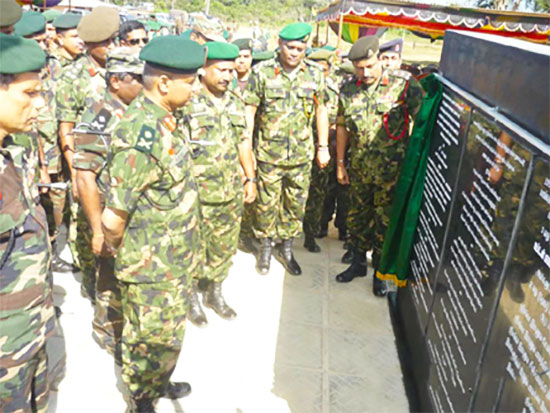
The Army unveiled a special war hero memorial opposite the new TV transmission tower at Kokavil after the conclusion of the war. It was put up in honour of those who made the supreme sacrifice at Kokavil in June 1990
By Shamindra Ferdinando
One-time Army Commander Gen. Daya Ratnayake (2013-2015) recently joined a special event on Zoom in honour of those who made the supreme sacrifice at Kokavil, 31 years ago. Prof. Raj Somadeva and writer Charith Kiriella delivered special lectures on the occasion. Those who defended the isolated Kokavil base – Officer Commanding, Kokavil transmission complex, Saliya Aladeniya, an old Trinitian who was posthumously promoted Captain of 3 Battalion, Sri Lanka Sinha Regiment (3 SLSR), and his men, perished in the battle. The LTTE didn’t hand over their bodies.
Aladeniya, the first recipient of the country’s highest gallantry award, Parama Weera Vibushanaya, sacrificed his young life, serving on underprepared and poorly equipped Army. Opportunistic politics of the day made matters worse.
Against the backdrop of renewed interest in Kokavil, in the wake of the recent commemorative event, and Derana ‘Big Focus’ featuring Gen. Ratnayaka , the writer felt the need to examine the then security-political environment. Let me stress that the June-July 1990 Kokavil battle was nothing but a debacle that caused a humiliating setback. Kokavil remained in the hands of the LTTE till 2009.
A comment on the recent print media reportage of Kokavil heroism by academic Michael Roberts, too, underscored the pivotal importance of a better understanding of the then situation. Author Roberts didn’t mince his words when pointing out the inadequacies in the coverage, though he appreciated the effort.
What went wrong at Kokavil? Why did the Army abandon the isolated detachment? Who created an environment conducive for the LTTE? And how the Kokavil debacle/tragedy transformed the entire Vanni landscape overnight to the LTTE advantage?
Having won the Dec 19, 1988 presidential election, UNP strongman Ranasinghe Premadasa (RP polled 2,569,199/50.43%. Sirimavo Bandaranaike polled 2,289,860/44.95%) then led the party to victory at Feb 15, 1989 parliamentary election. The UNP secured 125 seats whereas the main Opposition SLFP managed 67. It would be pertinent to mention that the UNP earlier, by way of a fraudulent referendum, conducted on Dec 22, 1982, extended the life of Parliament by six years. It was the only referendum held in Sri Lanka so far. The referendum resulted in the UNP continuing till 1989, after having won the 1977 general election, with a 4/5 landslide.
As requested by President Premadasa, rather bluntly, India brought its high profile military mission, in the North and East, to an end, in March 1990. India deployed troops, in July 1987, in terms of the Indo-Lanka Accord, forced on President JRJ. The writer was among a small group of journalists taken to Trincomalee harbour to see the Indian Peace Keeping Force (IPKF) quit Sri Lanka, following a 32-month deployment here (The IPKF is off – The Island, March 25, 1990). At the time India completed the withdrawal, the LTTE had been engaged in negotiations with a gullible Premadasa for over a year. The LTTE exploited direct negotiations with President Premadasa, the Commander-in-Chief of the armed forces. By the time the IPKF ended its mission here, the LTTE was ready to resume hostilities. However, the LTTE delayed the resumption of hostilities, till the second week of June, 1990.
The then Army Commander Lt. Gen. Hamilton Wanasinghe hadn’t been prepared to fight the battle hardened LTTE. Having inflicted heavy losses on the IPKF, and gained valuable battlefield experience, the LTTE was ready to strike the Army. Having literally crushed the second JVP insurrection, by early 1990 by wiping out its entire leadership, barring Somawansa Amerasinghe, who managed to escape to India in the nick of time, before security forces could get at him, the Army, too, was cocky and probably didn’t anticipate a large scale LTTE offensive, in less than three months, after the IPKF pullout, because of the ostensible honeymoon with President Premadasa, who even gifted it arms and other wherewithal.
The Kokavil debacle should be quite rightly examined against the backdrop of Premadasa’s folly. Then State Defence Minister Ranjan Wijeratne, Army Chief Gen. Wanasinghe, the then advisor to the President, Gen. (retd.) Cyril Ranatunga, and IGP Ernest Perera, couldn’t absolve themselves of the catastrophe caused by political-military miscalculations. All of them were made to look like utter fools. Premadasa made some ludicrous attempts to persuade the LTTE to return to the negotiating table. The President’s utter failure to comprehend the LTTE strategy is still a mystery. The top brass remained silent. Obviously, no one had the courage to advice the President, whose Chief Negotiator Minister A.C.S. Hameed’s desperate last minute attempt to keep the talks with the LTTE going led to him nearly paying with his life. Premadasa’s idiocy was such that he had no qualms in sacrificing the lives of several hundred police officers and men who were ordered to surrender to terrorists in an attempt to mollify the LTTE.
LTTE seizes A9 north of Vavuniya
 The attack on the Kokavil detachment took place in the wake of the massacre of police officers. Gen. Wanasinghe’s Army lacked the wherewithal to meet the threat. The Army could have made an attempt to neutralise the impending LTTE threat by reinforcing isolated detachments along the Kandy-Jaffna A9 road, north of Vavuniya. Unfortunately, the Army lacked the wherewithal to meet the LTTE threat in the Eastern theatre, Vanni and the Jaffna peninsula, simultaneously. Even if the Army had realised the rapidly growing danger, on multiple fronts, the top brass feared to warn Premadasa. Actually, Premadasa never believed in consensus on security matters. Premadasa simply threw caution to the winds.
The attack on the Kokavil detachment took place in the wake of the massacre of police officers. Gen. Wanasinghe’s Army lacked the wherewithal to meet the threat. The Army could have made an attempt to neutralise the impending LTTE threat by reinforcing isolated detachments along the Kandy-Jaffna A9 road, north of Vavuniya. Unfortunately, the Army lacked the wherewithal to meet the LTTE threat in the Eastern theatre, Vanni and the Jaffna peninsula, simultaneously. Even if the Army had realised the rapidly growing danger, on multiple fronts, the top brass feared to warn Premadasa. Actually, Premadasa never believed in consensus on security matters. Premadasa simply threw caution to the winds.
The Army was under pressure in the northern theatre, with the Jaffna Fort under attack. Kokavil was almost forgotten as it came under intensified attack, following the massacre of nearly 600 policemen in the East. In the North, the Army found it difficult even to evacuate the wounded. The Jaffna Fort, too, was under siege.
Maj. Gen. Denzil Kobbekaduwa was placed in charge of the Northern region on July 11, 1991, exactly a month after the eruption of hostilities. Army Chief Wanasinghe never explained why Kobbekaduwa hadn’t been brought into the scene until it was too late. Did Gen. Wanasinghe fail to convince Premadasa of the urgent need to change the Northern Command? By the time Kobbekaduwa received command, the situation had deteriorated to such an extent, his appearance didn’t make any difference. Just two days after, Kobbekaduwa received the Northern Command, the LTTE overran Kokavil held by two platoons. It was the first major setback on the A9. The Kokavil debacle highlighted the absence of a strategy either to reinforce isolated detachments or evacuate them. The SLAF lacked required strike capability. The SLAF struggled to cope up with increasingly heavy commitment with just the Italian built Sia Marchettis (propeller driven light ground attack aircraft hardly sufficient even for counter-insurgency operations). Volunteers deployed at isolated Kokavil detachment never had a chance against strong LTTE units. Sinha volunteers turned down an earlier directive to abandon the base, leaving behind seriously wounded men. The LTTE executed those captured during the battle for Kokavil. Two men who crawled through the LTTE cordon managed to reach Mankulam detachment situated north of Kokavil.
Let me stress that those killed defending detachments along the A9 North of Vavuniya, had to be buried there as the Army lacked the wherewithal to take back the dead and the wounded overland. Isolated detachments could be supplied by air and within a month after resumption of hostilities, following the 14-month Premadasa-Prabhakaran honeymoon, the A9 aka Main Supply Route (MSR) north up to strategic Elephant Pass, was lost. The SLAF carried out risky missions to supply isolated bases and evacuate the wounded.
Four years after the combined security forces brought the war to a successful end, the then Brigadier Maithri Dias, recounted how the Army planned to evacuate Kilinochchi, even before the resumption of hostilities. Having vacated both Valvettithurai and Point Pedro detachments on the LTTE’s request, the President wouldn’t have minded the Army giving up more camps. The planned evacuation of the Kilinochchi detachment obviously is a case in point. What was really shocking was the Army seeking the assistance of a Catholic priest, based in Kilinochchi, to evacuate the personnel along with arms, ammunition and equipment.
Who wanted Kilinochchi evacuated?
The then Capt. Maithri Dias, of the 6th Battalion of the Sinha Regiment (6SR), arrived in Kilinochchi several days before the LTTE resumed hostilities, on June 11, 1990, with the massacre of hundreds of policemen in the Eastern Province. Dias was responding to a directive from Lt. Colonel H. R. Stephen, the then Coordinating Officer, based in Kilinochchi (Lt. Col. Stephen was killed on the morning of Aug.8, 1992, at Araly point, Kayts. He was one of the officers killed along with war veterans, Maj. Gen. Denzil Kobbekaduwa, Brig. Wijaya Wimalaratne. The dead included Rear Admiral Mohan Jayamaha, Lt Colonel G.H. Ariyarathne, Lt Colonel Y.N. Palipana, Commander Asanga Lankathilaka, Lt Colonel Nalin de Alwis, Lt Commander C.B. Wijepura and Private W J Wickremasinghe). Only one survived the blast.
Dias, the then General Officer Commanding 54 Division, got in touch with the writer immediately having read ‘Eelam War II: LTTE takes upper hand at the onset – The Island Feb 22, 2013).
Brigadier Dias recounted the situation in Kilinochchi, leading to the Army headquarters directive to vacate the town in the last week of July 1990. Dias said: “I was tasked to function as a staff officer in Kilinochchi under Lt. Colonel Stephen. The deployment therein comprised one platoon of 6 SR, another platoon of 3 SR (Volunteer) as well as support personnel (3 SR volunteers were based at Kokavil, south of Mankulam) There were altogether about 90 personnel at Kilinochchi. As the then government was having talks with the LTTE, we never expected any serious trouble. Along the A9 road, north of Vavuniya, we had several camps. North of Kilinochchi, troops were positioned at Elephant Pass, Jaffna Fort and Palaly. South of Kilinochchi, troops held Mankulam and Kokavil. Immediately after arriving in Kilinochchi, I was told by Lt. Col. Stephen to prepare to evacuate the troops. On the instructions of the Coordinating Officer, I met a Catholic priest in Kilinochchi to discuss transport arrangements for my men. Lt. Col. Stephen was away in Palaly. He was to go on leave following a conference in Palaly. Following the conference I received further instructions from Lt. Col. Stephen regarding the planned withdrawal. I was told to prepare a plan for an immediate withdrawal. As earlier discussed, I went out to meet the Catholic priest, who promised to help us move men and material from Kilinochchi to Elephant Pass. The sudden disappearance of the priest made me uneasy. The following day (June 11, 1990), the LTTE started attacking the police and the Army in the Eastern Province.”
Dias retired in 2016 after serving as the General Officer Commanding (GoC) of 53 Division after having been promoted to the rank of Maj. Gen in 2014.
It was evident that the then government had decided to abandon Kilinochchi, even before the outbreak of hostilities in the second week of June 1990. At that time Maj. Gen. Jaliya Nanmunai had served as Security Forces Commander, Jaffna.
Saving Kilinochchi troops
In spite of the much deteriorated situation at Kokavil, troops at Mankulam couldn’t intervene. The entire Army had been under tremendous pressure as the LTTE advanced on bases in the Vanni theatre. Brig. Dias recalled the crises the Army faced: “We heard heavy gunfire from the direction of Kokavil, where troops were fighting a desperate battle. The Kokavil debacle had a devastating impact on the Army. A section of troops based, at Kilinochchi, declared their intention to vacate the camp, regardless of the consequences. Having calmed them, I took measures to further strengthen the defences until a large force could intervene to facilitate our withdrawal, northwards. Pushing towards Kokavil seemed unrealistic and suicidal.”
However, those deployed at Kilinochchi had been extremely lucky as the Jaffna Command managed to muster sufficient troops to reach the beleaguered base in the last week of July. The 6th Battalion of the Gajaba Regiment (6 GR) and the 5th Battalion of the Gemunu Watch (5 GW) advanced from Elephant Pass to Kilinochchi to save those trapped at the Kilinochchi camp.
During the rescue mission, troops at Kilinochchi had almost lost communications with those coming to their rescue. Brig. Dias said: “We ran out of fuel needed to maintain communications. Luckily, the two Land Cruisers, which we removed from the Kilinochchi police station at the onset of trouble, had fuel in their tanks and it was adequate to meet our immediate requirement.”
Interestingly, Brig. Dias is the first GOC of the re-established 54 Division. Army headquarters restored the Division on Sept 10, 2010. The LTTE literally wiped out the 54 Division headquartered at Elephant Pass in late April 2000. Heavy losses suffered by the Division compelled Army headquarters to disband the formation. It was the worst battlefield defeat experienced by the Army during the entire conflict.
In September, 1990, the Army vacated isolated bases at Jaffna Fort and Mandaitivu. In the third week of Nov, the LTTE overran the Mankulam detachment on the A9. Premadasa’s security advisor, retired Gen. Cyril Ranatunga remained mum. Ranatunga played it safe. Just within four weeks after the eruption of Eelam War II, on June 11, 1990, the Army lost Kokavil and Kilinochchi. Mankulam was abandoned in the third week of Nov, 1990, thereby giving the LTTE unhindered access across Kandy-Jaffna A9, between Vavuniya and Elephant Pass.
The Army abandoned Mankulam under heavy fire just weeks after carrying out a heli-borne mission to consolidate the base. In the absence of an overall contingency plan, the Army responded to LTTE operations over a wide area.
Premadasa lacked even basic interest in security matters thereby allowing unpardonable deterioration of the security situation. Perhaps, the threat the President faced within the UNP, with a powerful section more or less discarded by him, working with the SLFP to impeach him, unsettled Premadasa. Premadasa remained immobilised in the wake of the LTTE directive in late Oct/Nov 1990 for the Northern Province Muslims to vacate the region. The government actually did nothing to avert the unprecedented crisis. The courageous efforts made by troops, under Captain Aladeniya’s command, underscored the Army’s failure. Even though the Army discussed the possibility of mounting a heli-borne mission to break the siege on Kokavil detachment in June it never materialised. Troops called in to carry out that mission were eventually deployed for the rescue of those who had been trapped at Mankulam. But, the Army subsequently withdrew a section of the troops, including commandos sent to Mankulam. Overnight, Mankulam became vulnerable and eventually the LTTE overran it in Nov 1990. Within eight months after the IPKF withdrawal, Premadasa lost the entire Vanni region with troops confined to few coastal areas. In the Jaffna peninsula, the Army had been confined to Palaly, Kankesanthurai and Elephant Pass where troops received supplies from air and sea. The Navy struggled to move supplies required by the Army to the North from the eastern port city of Trincomalee whereas the SLAF, too, operated flights to Palaly under difficult circumstances. However, in the absence of missile threat, during the Eelam War II, facilitated supply missions to the North. But, overall supplying troops based in the Jaffna peninsula had been a tremendous challenge faced by the military.
Strategic Elephant Pass base was almost overrun in mid-1991. If not for the successful sea borne assault by troops of Operation Balavegaya led by Gen Denzil Kobekaduwa and Brig. Wimalaratne, Elephant Pass too would have been overrun.
Premadasa caused an unprecedented catastrophe by pursuing an utterly foolish political agenda at the expense of national security. His failure as well as that of Gen. Wanasinghe to prepare for any eventuality following the IPKF withdrawal allowed the LTTE to take the upper hand in the Vanni region. By the time the LTTE assassinated Premadasa on May Day 1993, the LTTE achieved superiority in the North with all bases under pressure and the situation was rapidly deteriorating. The LTTE gradually pressed the Army in the North with Palaly under siege at the time of 1994 parliamentary elections followed by presidential polls in Nov 1994.
Features
Handunnetti and Colonial Shackles of English in Sri Lanka
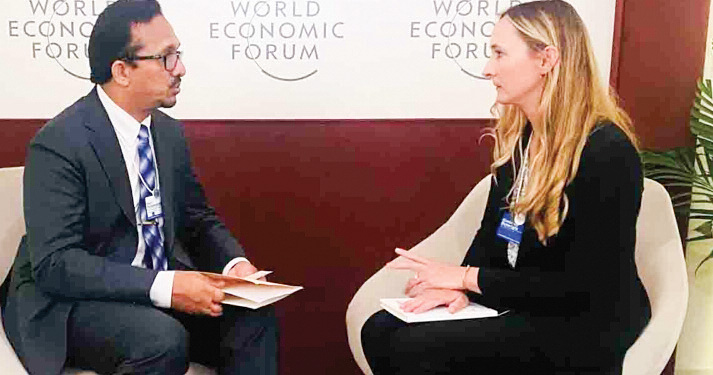
“My tongue in English chains.
I return, after a generation, to you.
I am at the end
of my Dravidic tether
hunger for you unassuaged
I falter, stumble.”
– Indian poet R. Parthasarathy
 When Minister Sunil Handunnetti addressed the World Economic Forum’s ‘Is Asia’s Century at Risk?’ discussion as part of the Annual Meeting of the New Champions 2025 in June 2025, I listened carefully both to him and the questions that were posed to him by the moderator. The subsequent trolling and extremely negative reactions to his use of English were so distasteful that I opted not to comment on it at the time. The noise that followed also meant that a meaningful conversation based on that event on the utility of learning a powerful global language and how our politics on the global stage might be carried out more successfully in that language was lost on our people and pundits, barring a few commentaries.
When Minister Sunil Handunnetti addressed the World Economic Forum’s ‘Is Asia’s Century at Risk?’ discussion as part of the Annual Meeting of the New Champions 2025 in June 2025, I listened carefully both to him and the questions that were posed to him by the moderator. The subsequent trolling and extremely negative reactions to his use of English were so distasteful that I opted not to comment on it at the time. The noise that followed also meant that a meaningful conversation based on that event on the utility of learning a powerful global language and how our politics on the global stage might be carried out more successfully in that language was lost on our people and pundits, barring a few commentaries.
Now Handunnetti has reopened the conversation, this time in Sri Lanka’s parliament in November 2025, on the utility of mastering English particularly for young entrepreneurs. In his intervention, he also makes a plea not to mock his struggle at learning English given that he comes from a background which lacked the privilege to master the language in his youth. His clear intervention makes much sense.
The same ilk that ridiculed him when he spoke at WEF is laughing at him yet again on his pronunciation, incomplete sentences, claiming that he is bringing shame to the country and so on and so forth. As usual, such loud, politically motivated and retrograde critics miss the larger picture. Many of these people are also among those who cannot hold a conversation in any of the globally accepted versions of English. Moreover, their conceit about the so-called ‘correct’ use of English seems to suggest the existence of an ideal English type when it comes to pronunciation and basic articulation. I thought of writing this commentary now in a situation when the minister himself is asking for help ‘in finding a solution’ in his parliamentary speech even though his government is not known to be amenable to critical reflection from anyone who is not a party member.
The remarks at the WEF and in Sri Lanka’s parliament are very different at a fundamental level, although both are worthy of consideration – within the realm of rationality, not in the depths of vulgar emotion and political mudslinging.
The problem with Handunnetti’s remarks at WEF was not his accent or pronunciation. After all, whatever he said could be clearly understood if listened to carefully. In that sense, his use of English fulfilled one of the most fundamental roles of language – that of communication. Its lack of finesse, as a result of the speaker being someone who does not use the language professionally or personally on a regular basis, is only natural and cannot be held against him. This said, there are many issues that his remarks flagged that were mostly drowned out by the noise of his critics.
Given that Handunnetti’s communication was clear, it also showed much that was not meant to be exposed. He simply did not respond to the questions that were posed to him. More bluntly, a Sinhala speaker can describe the intervention as yanne koheda, malle pol , which literally means, when asked ‘Where are you going?’, the answer is ‘There are coconuts in the bag’.
He spoke from a prepared text which his staff must have put together for him. However, it was far off the mark from the questions that were being directly posed to him. The issue here is that his staff appears to have not had any coordination with the forum organisers to ascertain and decide on the nature of questions that would be posed to the Minister for which answers could have been provided based on both global conditions, local situations and government policy. After all, this is a senior minister of an independent country and he has the right to know and control, when possible, what he is dealing with in an international forum.
This manner of working is fairly routine in such international fora. On the one hand, it is extremely unfortunate that his staff did not do the required homework and obviously the minister himself did not follow up, demonstrating negligence, a want for common sense, preparedness and experience among all concerned. On the other hand, the government needs to have a policy on who it sends to such events. For instance, should a minister attend a certain event, or should the government be represented by an official or consultant who can speak not only fluently, but also with authority on the subject matter. That is, such speakers need to be very familiar with the global issues concerned and not mere political rhetoric aimed at local audiences.
Other than Handunnetti, I have seen, heard and also heard of how poorly our politicians, political appointees and even officials perform at international meetings (some of which are closed door) bringing ridicule and disastrous consequences to the country. None of them are, however, held responsible.
Such reflective considerations are simple yet essential and pragmatic policy matters on how the government should work in these conditions. If this had been undertaken, the WEF event might have been better handled with better global press for the government. Nevertheless, this was not only a matter of English. For one thing, Handunnetti and his staff could have requested for the availability of simultaneous translation from Sinhala to English for which pre-knowledge of questions would have been useful. This is all too common too. At the UN General Assembly in September, President Dissanayake spoke in Sinhala and made a decent presentation.
The pertinent question is this; had Handunetti had the option of talking in Sinhala, would the interaction have been any better? That is extremely doubtful, barring the fluency of language use. This is because Handunnetti, like most other politicians past and present, are good at rhetoric but not convincing where substance is concerned, particularly when it comes to global issues. It is for this reason that such leaders need competent staff and consultants, and not mere party loyalists and yes men, which is an unfortunate situation that has engulfed the whole government.
What about the speech in parliament? Again, as in the WEF event, his presentation was crystal clear and, in this instance, contextually sensible. But he did not have to make that speech in English at all when decent simultaneous translation services were available. In so far as content was concerned, he made a sound argument considering local conditions which he knows well. The minister’s argument is about the need to ensure that young entrepreneurs be taught English so that they can deal with the world and bring investments into the country, among other things. This should actually be the norm, not only for young entrepreneurs, but for all who are interested in widening their employment and investment opportunities beyond this country and in accessing knowledge for which Sinhala and Tamil alone do not suffice.
As far as I am concerned, Handunetti’s argument is important because in parliament, it can be construed as a policy prerogative. Significantly, he asked the Minister of Education to make this possible in the educational reforms that the government is contemplating.
He went further, appealing to his detractors not to mock his struggle in learning English, and instead to become part of the solution. However, in my opinion, there is no need for the Minister to carry this chip on his shoulder. Why should the minister concern himself with being mocked for poor use of English? But there is a gap that his plea should have also addressed. What prevented him from mastering English in his youth goes far deeper than the lack of a privileged upbringing.
The fact of the matter is, the facilities that were available in schools and universities to learn English were not taken seriously and were often looked down upon as kaduwa by the political spectrum he represents and nationalist elements for whom the utilitarian value of English was not self-evident. I say this with responsibility because this was a considerable part of the reality in my time as an undergraduate and also throughout the time I taught in Sri Lanka.
Much earlier in my youth, swayed by the rhetoric of Sinhala language nationalism, my own mastery of English was also delayed even though my background is vastly different from the minister. I too was mocked, when two important schools in Kandy – Trinity College and St. Anthony’s College – refused to accept me to Grade 1 as my English was wanting. This was nearly 20 years after independence. I, however, opted to move on from the blatant discrimination, and mastered the language, although I probably had better opportunities and saw the world through a vastly different lens than the minister. If the minister’s commitment was also based on these social and political realities and the role people like him had played in negating our English language training particularly in universities, his plea would have sounded far more genuine.
If both these remarks and the contexts in which they were made say something about the way we can use English in our country, it is this: On one hand, the government needs to make sure it has a pragmatic policy in place when it sends representatives to international events which takes into account both a person’s language skills and his breadth of knowledge of the subject matter. On the other hand, it needs to find a way to ensure that English is taught to everyone successfully from kindergarten to university as a tool for inclusion, knowledge and communication and not a weapon of exclusion as is often the case.
This can only bear fruit if the failures, lapses and strengths of the country’s English language teaching efforts are taken into cognizance. Lamentably, division and discrimination are still the main emotional considerations on which English is being popularly used as the trolls of the minister’s English usage have shown. It is indeed regrettable that their small-mindedness prevents them from realizing that the Brits have long lost their long undisputed ownership over the English language along with the Empire itself. It is no longer in the hands of the colonial masters. So why allow it to be wielded by a privileged few mired in misplaced notions of elitism?
Features
Finally, Mahinda Yapa sets the record straight
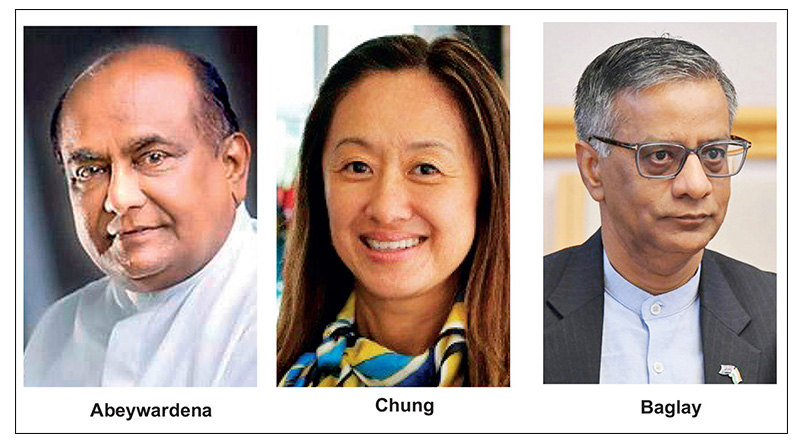
Clandestine visit to Speaker’s residence:
Finally, former Speaker Mahinda Yapa Abeywardena has set the record straight with regard to a controversial but never properly investigated bid to swear in him as interim President. Abeywardena has disclosed the circumstances leading to the proposal made by external powers on the morning of 13 July, 2022, amidst a large scale staged protest outside the Speaker’s official residence, situated close to Parliament.
Lastly, the former parliamentarian has revealed that it was then Indian High Commissioner, in Colombo, Gopal Baglay (May 2022 to December 2023) who asked him to accept the presidency immediately. Professor Sunanda Maddumabandara, who served as Senior Advisor (media) to President Ranil Wickremesinghe (July 2022 to September 2024), disclosed Baglay’s direct intervention in his latest work, titled ‘Aragalaye Balaya’ (Power of Aragalaya).
Prof. Maddumabandara quoted Abeywardena as having received a startling assurance that if he agreed to accept the country’s leadership, the situation would be brought under control, within 45 minutes. Baglay had assured Abeywardena that there is absolutely no harm in him succeeding President Gotabaya Rajapaksa, in view of the developing situation.
The author told the writer that only a person who had direct control over the violent protest campaign could have given such an assurance at a time when the whole country was in a flux.
One-time Vice Chancellor of the Kelaniya University, Prof. Maddumabandara, launched ‘Aragalaye Balaya’ at the Sri Lanka Foundation on 20 November. In spite of an invitation extended to former President Gotabaya Rajapaksa, the ousted leader hadn’t attended the event, though UNP leader Ranil Wickremesinghe was there. Maybe Gotabaya felt the futility of trying to expose the truth against evil forces ranged against them, who still continue to control the despicable agenda.
Obviously, the author has received the blessings of Abeywardena and Wickremesinghe to disclose a key aspect in the overall project that exploited the growing resentment of the people to engineer change of Sri Lankan leadership.
The declaration of Baglay’s intervention has contradicted claims by National Freedom Front (NFF) leader Wimal Weerawansa (Nine: The hidden story) and award-winning writer Sena Thoradeniya (Galle Face Protest: System change for anarchy) alleged that US Ambassador Julie Chung made that scandalous proposal to Speaker Abeywardena. Weerawansa and Thoradeniya launched their books on 25 April and 05 July, 2023, at the Sri Lanka Foundation and the National Library and Documentation Services Board, Independence Square, respectively. Both slipped in accusing Ambassador Chung of making an abortive bid to replace Gotabaya Rajapaksa with Mahinda Yapa Abeywardena.
Ambassador Chung categorically denied Weerawansa’s allegation soon after the launch of ‘Nine: The hidden story’ but stopped short of indicating that the proposal was made by someone else. Chung had no option but to keep quiet as she couldn’t, in response to Weerawansa’s claim, have disclosed Baglay’s intervention, under any circumstances, as India was then a full collaborator with Western designs here for its share of spoils. Weerawansa, Thoradeniya and Maddumabandara agree that Aragalaya had been a joint US-Indian project and it couldn’t have succeeded without their intervention. Let me reproduce the US Ambassador’s response to Weerawansa, who, at the time of the launch, served as an SLPP lawmaker, having contested the 2020 August parliamentary election on the SLPP ticket.
“I am disappointed that an MP has made baseless allegations and spread outright lies in a book that should be labelled ‘fiction’. For 75 years, the US [and Sri Lanka] have shared commitments to democracy, sovereignty, and prosperity – a partnership and future we continue to build together,” Chung tweeted Wednesday 26 April, evening, 24 hours after Weerawansa’s book launch.
Interestingly, Gotabaya Rajapaksa has been silent on the issue in his memoirs ‘The Conspiracy to oust me from Presidency,’ launched on 07 March, 2024.
What must be noted is that our fake Marxists, now entrenched in power, were all part and parcel of Aragalaya.
A clandestine meeting
Abeywardena should receive the appreciation of all for refusing to accept the offer made by Baglay, on behalf of India and the US. He had the courage to tell Baglay that he couldn’t accept the presidency as such a move violated the Constitution. In our post-independence history, no other politician received such an offer from foreign powers. When Baglay stepped up pressure, Abeywardena explained that he wouldn’t change his decision.
Maddumabandara, based on the observations made by Abeywardena, referred to the Indian High Commissioner entering the Speaker’s Official residence, unannounced, at a time protesters blocked the road leading to the compound. The author raised the possibility of Baglay having been in direct touch with those spearheading the high profile political project.
Clearly Abeywardena hadn’t held back anything. The former Speaker appeared to have responded to those who found fault with him for not responding to allegations, directed at him, by revealing everything to Maddumabandara, whom he described in his address, at the book launch, as a friend for over five decades.
At the time, soon after Baglay’s departure from the Speaker’s official residence, alleged co-conspirators Ven. Omalpe Sobitha, accompanied by Senior Professor of the Sinhala Faculty at the Colombo University, Ven. Agalakada Sirisumana, health sector trade union leader Ravi Kumudesh, and several Catholic priests, arrived at the Speaker’s residence where they repeated the Indian High Commissioner’s offer. Abeywardena repeated his previous response despite Sobitha Thera acting in a threatening manner towards him to accept their dirty offer. Shouldn’t they all be investigated in line with a comprehensive probe?
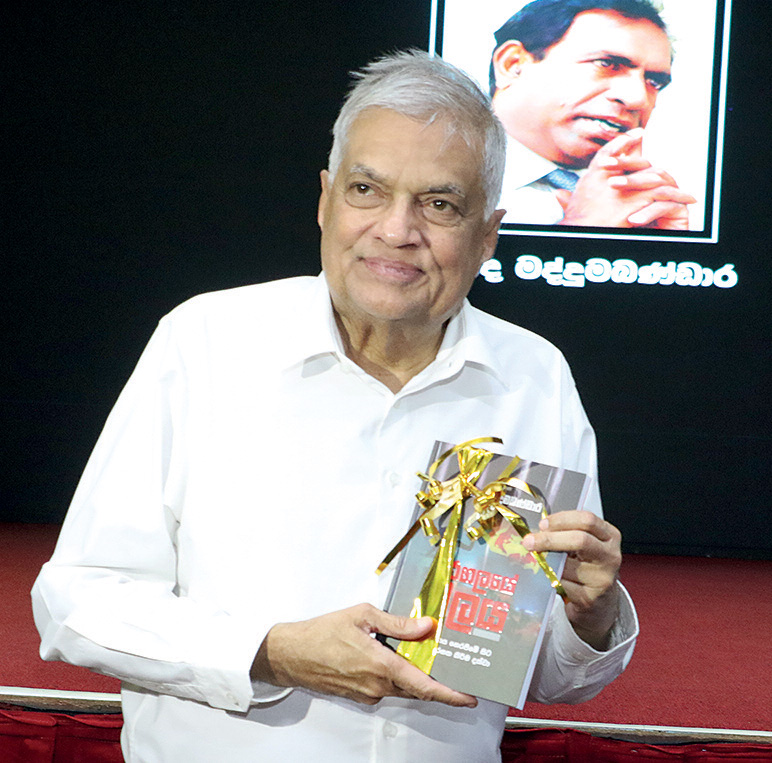
Ex-President Wickremesinghe with a copy of Aragalaye Balaya he received from its author, Prof. Professor Sunanda Maddumabandara, at the Sri Lanka Foundation recently (pic by Nishan S Priyantha)
On the basis of what Abeywardena had disclosed to him, Maddumabanadara also questioned the circumstances of the deployment of the elite Special Task Force (STF) contingent at the compound. The author asked whether that deployment, without the knowledge of the Speaker, took place with the intervention of Baglay.
Aragalaye Balaya
is a must read for those who are genuinely interested in knowing the unvarnished truth. Whatever the deficiencies and inadequacies on the part of the Gotabaya Rajapaksa administration, external powers had engineered a change of government. The writer discussed the issues that had been raised by Prof. Maddumabandara and, in response to one specific query, the author asserted that in spite of India offering support to Gotabaya Rajapaksa earlier to get Ranil Wickremesinghe elected as the President by Parliament to succeed him , the latter didn’t agree with the move. Then both the US and India agreed to bring in the Speaker as the Head of State, at least for an interim period.
If Speaker Abeywardena accepted the offer made by India, on behalf of those backing the dastardly US backed project, the country could have experienced far reaching changes and the last presidential election may not have been held in September, 2004.
After the conclusion of his extraordinary assignment in Colombo, Baglay received appointment as New Delhi’s HC in Canberra. Before Colombo, Baglay served in Indian missions in Ukraine, Russia, the United Kingdom, Nepal and Pakistan (as Deputy High Commissioner).
Baglay served in New Delhi, in the office of the Prime Minister of India, and in the Ministry of External Affairs as its spokesperson, and in various other positions related to India’s ties with her neighbours, Europe and multilateral organisations.
Wouldn’t it be interesting to examine who deceived Weerawansa and Thoradeniya who identified US Ambassador Chung as the secret visitor to the Speaker’s residence. Her high-profile role in support of the project throughout the period 31 March to end of July, 2022, obviously made her an attractive target but the fact remains it was Baglay who brought pressure on the then Speaker. Mahinda Yapa Abeywardena’s clarification has given a new twist to “Aragalaya’ and India’s diabolical role.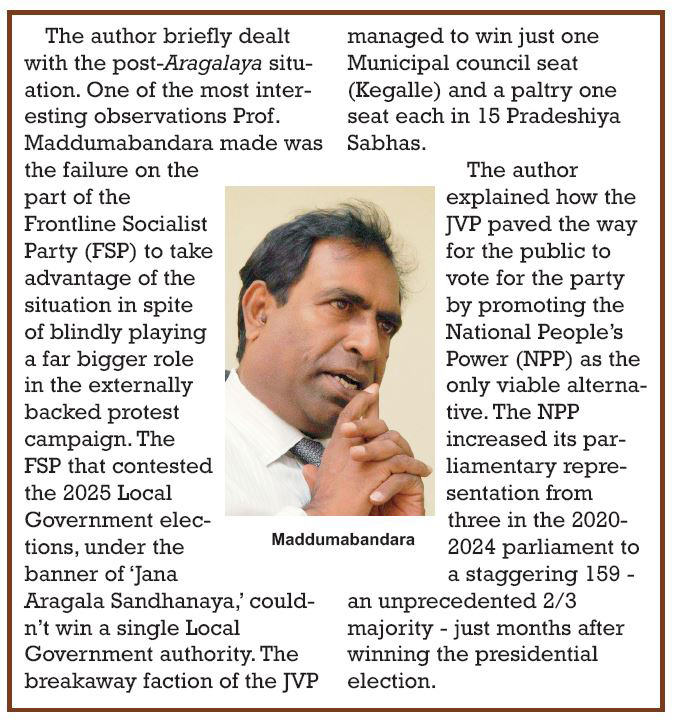
Absence of investigations
Sri Lanka never really wanted to probe the foreign backed political plot to seize power by extra-parliamentary means. Although some incidents had been investigated, the powers that be ensured that the overall project remained uninvestigated. In fact, Baglay’s name was never mentioned regarding the developments, directly or indirectly, linked to the devious political project. If not for Prof. Maddumabandara taking trouble to deal with the contentious issue of regime change, Baglay’s role may never have come to light. Ambassador Chung would have remained the target of all those who found fault with US interventions. Let me be clear, the revelation of Baglay’s clandestine meeting with the Speaker didn’t dilute the role played by the US in Gotabaya Rajapaksa’s removal.
If Prof. Maddumabandara propagated lies, both the author and Abeywardana should be appropriately dealt with. Aragalaye Balaya failed to receive the desired or anticipated public attention. Those who issue media statements at the drop of a hat conveniently refrained from commenting on the Indian role. Even Abeywardena remained silent though he could have at least set the record straight after Ambassador Chung was accused of secretly meeting the Speaker. Abeywardena could have leaked the information through media close to him. Gotabaya Rajapaksa and Ranil Wickremesinghe, too, could have done the same but all decided against revealing the truth.
A proper investigation should cover the period beginning with the declaration made by Gotabaya Rajapaksa’s government, in April 2022, regarding the unilateral decision to suspend debt repayment. But attention should be paid to the failure on the part of the government to decide against seeking assistance from the International Monetary Fund (IMF) to overcome the crisis. Those who pushed Gotabaya Rajapaksa to adopt, what they called, a domestic solution to the crisis created the environment for the ultimate collapse that paved the way for external interventions. Quite large and generous Indian assistance provided to Sri Lanka at that time should be examined against the backdrop of a larger frightening picture. In other words, India was literally running with the sheep while hunting with the hounds. Whatever the criticism directed at India over its role in regime change operation, prompt, massive and unprecedented post-Cyclone Ditwah assistance, provided by New Delhi, saved Sri Lanka. Rapid Indian response made a huge impact on Sri Lanka’s overall response after having failed to act on a specific 12 November weather alert.
It would be pertinent to mention that all governments, and the useless Parliament, never wanted the public to know the truth regarding regime change project. Prof. Maddumabandara discussed the role played by vital sections of the armed forces, lawyers and the media in the overall project that facilitated external operations to force Gotabaya Rajapaksa out of office. The author failed to question Wickremesinghe’s failure to launch a comprehensive investigation, with the backing of the SLPP, immediately after he received appointment as the President. There seems to be a tacit understanding between Wickremesinghe and the SLPP that elected him as the President not to initiate an investigation. Ideally, political parties represented in Parliament should have formed a Special Parliamentary Select Committee (PSC) to investigate the developments during 2019 to the end of 2022. Those who had moved court against the destruction of their property, during the May 2022 violence directed at the SLPP, quietly withdrew that case on the promise of a fresh comprehensive investigation. This assurance given by the Wickremesinghe government was meant to bring an end to the judicial process.
When the writer raised the need to investigate external interventions, the Human Rights Commission of Sri Lanka (HRCSL) sidestepped the issue. Shame on the so-called independent commission, which shows it is anything but independent.
Sumanthiran’s proposal
Since the eradication of the Liberation Tigers of Tamil Eelam (LTTE) in May 2009, the now defunct Tamil National Alliance’s (TNA) priority had been convincing successive governments to withdraw the armed forces/ substantially reduce their strength in the Northern and Eastern Provinces. The Illankai Thamil Arasu Kadchi (ITAK)-led TNA, as well as other Tamil political parties, Western powers, civil society, Tamil groups, based overseas, wanted the armed forces out of the N and E regions.
Abeywardena also revealed how the then ITAK lawmaker, M.A. Sumanthiran, during a tense meeting chaired by him, in Parliament, also on 13 July, 2022, proposed the withdrawal of the armed forces from the N and E for redeployment in Colombo. The author, without hesitation, alleged that the lawmaker was taking advantage of the situation to achieve their longstanding wish. The then Speaker also disclosed that Chief Opposition Whip Lakshman Kiriella and other party leaders leaving the meeting as soon as the armed forces reported the protesters smashing the first line of defence established to protect the Parliament. However, leaders of minority parties had remained unruffled as the situation continued to deteriorate and external powers stepped up efforts to get rid of both Gotabaya Rajapaksa and Ranil Wickremesinghe to pave the way for an administration loyal and subservient to them. Foreign powers seemed to have been convinced that Speaker Abeywardena was the best person to run the country, the way they wanted, or till the Aragalaya mob captured the House.
The Author referred to the role played by the media, including social media platforms, to promote Gotabaya Rajapaksa’s successor. Maddumamabandara referred to the Hindustan Times coverage to emphasise the despicable role played by a section of the media to manipulate the rapid developments that were taking place. The author also dealt with the role played by the Janatha Vimukthi Peramuna (JVP) in the project with the focus on how that party intensified its actions immediately after Gotabaya Rajapaksa stepped down.
Disputed assessment
The Author identified Ministers Bimal Rathnayaka, Sunil Handunetti and K.D. Lal Kantha as the persons who spearheaded the JVP bid to seize control of Parliament. Maddumabanda unflinchingly compared the operation, mounted against Gotabaya Rajapaksa, with the regime change operations carried out in Iraq, Libya, Egypt and Ukraine. Asserting that governments loyal to the US-led Western block had been installed in those countries, the author seemed to have wrongly assumed that external powers failed to succeed in Sri Lanka (pages 109 and 110). That assertion is utterly wrong. Perhaps, the author for some unexplained reasons accepted what took place here. Nothing can be further from the truth than the regime change operation failed (page 110) due to the actions of Gotabaya Rajapaksa, Mahinda Yapa Abeywardana and Ranil Wickremesinghe. In case, the author goes for a second print, he should seriously consider making appropriate corrections as the current dispensation pursues an agenda in consultation with the US and India.
The signing of seven Memorandums of Understanding (MoUs) with India, including one on defence, and growing political-defence-economic ties with the US, have underscored that the JVP-led National People’s Power (NPP) may not have been the first choice of the US-India combine but it is certainly acceptable to them now.
The bottom line is that a democratically elected President, and government, had been ousted through unconstitutional means and Sri Lanka meekly accepted that situation without protest. In retrospect, the political party system here has been subverted and changed to such an extent, irreparable damage has been caused to public confidence. External powers have proved that Sri Lanka can be influenced at every level, without exception, and the 2022 ‘Aragalaya’ is a case in point. The country is in such a pathetic state, political parties represented in Parliament and those waiting for an opportunity to enter the House somehow at any cost remain vulnerable to external designs and influence.
Cyclone Ditwah has worsened the situation. The country has been further weakened with no hope of early recovery. Although the death toll is much smaller compared to that of the 2004 tsunami, economic devastation is massive and possibly irreversible and irreparable.
By Shamindra Ferdinando
Features
Radiance among the Debris
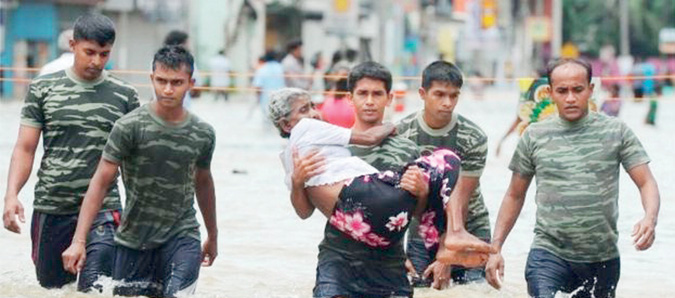
Over the desolate watery wastes,
Dulling the glow of the fabled Gem,
There opens a rainbow of opportunity,
For the peoples North and South,
To not only meet and greet,
But build a rock-solid bridge,
Of mutual help and solidarity,
As one undivided suffering flesh,
And we are moved to say urgently-
‘All you who wax so lyrically,
Of a united nation and reconciliation,
Grab this bridge-building opportunity.’
By Lynn Ockersz
-

 News4 days ago
News4 days agoOver 35,000 drug offenders nabbed in 36 days
-
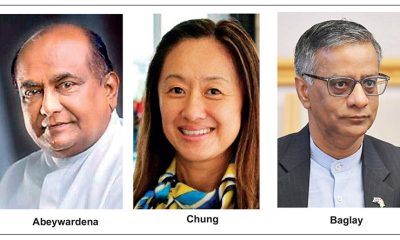
 Features2 days ago
Features2 days agoFinally, Mahinda Yapa sets the record straight
-
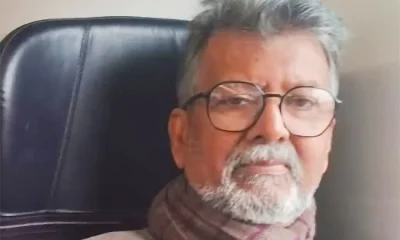
 News3 days ago
News3 days agoCyclone Ditwah leaves Sri Lanka’s biodiversity in ruins: Top scientist warns of unseen ecological disaster
-

 Business6 days ago
Business6 days agoLOLC Finance Factoring powers business growth
-

 News6 days ago
News6 days agoCPC delegation meets JVP for talks on disaster response
-
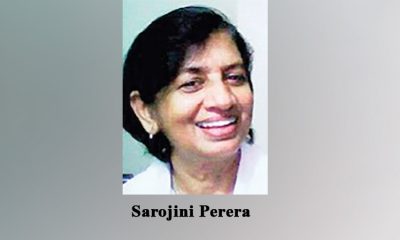
 News6 days ago
News6 days agoA 6th Year Accolade: The Eternal Opulence of My Fair Lady
-

 News4 days ago
News4 days agoRising water level in Malwathu Oya triggers alert in Thanthirimale
-
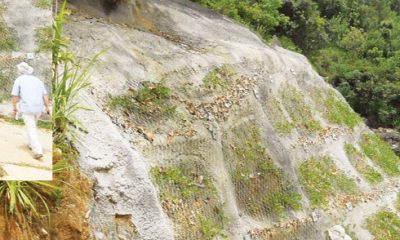
 Features5 days ago
Features5 days agoThe Catastrophic Impact of Tropical Cyclone Ditwah on Sri Lanka:













